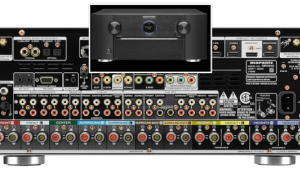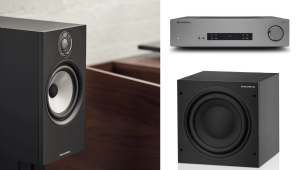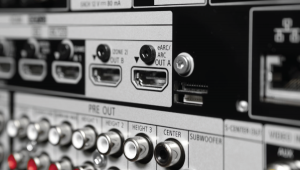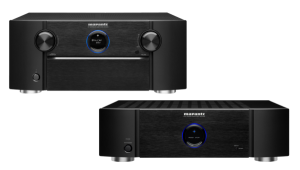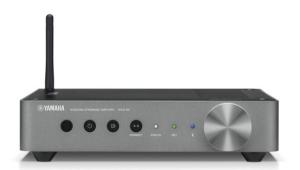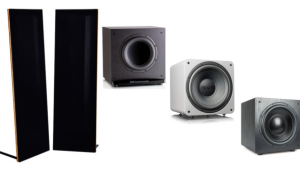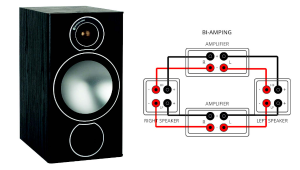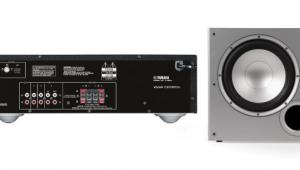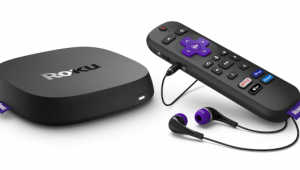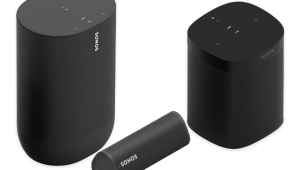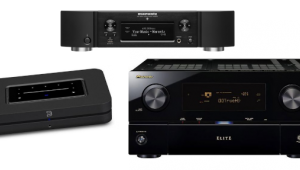AVR Setup, AVR Compatibility, VGA

I purchased an SPL meter to level the speakers in my 5.1 surround system. I read an article in Home Theater magazine about how to use this device, but I'm still not sure how to do it. For example, I'm not sure where to put the dialdo I start at 80 or 120?
John Krause
You don't say what brand of SPL meter you bought, so I'm going to assume it's a RadioShack analog meter as pictured above, which is one of the most common consumer SPL meters.
First of all, most modern A/V receivers and preamp/processors now offer an automatic-setup function (Audyssey, Yamaha YPAO, Pioneer MCACC, etc.), which uses a microphone included with the unit. If you have an AVR or pre/pro with this feature, there's no need to perform a manual setup, though it's a good idea to check the automatic results with your SPL meter to make sure they're correct. If your AVR or pre/pro doesn't have auto setup, you'll have to do it manually.
Let's start with a few fundamentals. The "reference level" for home theaters is defined by the movie industry to be an average sound pressure level of 85 decibels, C-weighted (dBC), which means that setting your AVR's level control to 0 results in an average sound pressure level of 85dBC. (Don't worry about what "C-weighted" means; it doesn't matter for the purpose of this discussion.) The important word here is average. When you calibrate to this average level, setting your AVR's volume control to 0 can result in a peak level of 105dB SPL on many films and even higher in the LFE channel. This is louder than most people can tolerate, so you normally set the volume lower than 0 when listening to music or movies.
Because 85dBC test tones can be quite loud, Dolby decided that a reasonable test-tone level is 75dBC, which is what most AVRs use these days. Thus, you need to set the SPL meter's Range control to 70 or 80. Also, set the Weighting control to C and the Response control to Slow. (If you set it to Fast, the needle will jump around and make it difficult to read a value on the meter.)
For example, say you set the Range control to 80when the meter reads 0, it is measuring a sound pressure level of 80dBC, and when it reads -5, it is measuring 75dBC. If you set the range control to 70, a reading of +5 means it's measuring 75dBC. (BTW, if you set the Range control to 120, a reading of 0 on the meter indicates a sound pressure level of 120dBC, which will damage your hearing very quickly! But not to worrymost consumer audio systems can't play that loud anyway.)
When you put an AVR into its manual-setup mode, it will typically disable the main volume control and play test tonesactually, test noisesfrom each speaker at what it thinks is 75dBC. Mount the SPL meter on a tripod and place it in your listening position at seated ear height. Point the meter straight up and see what the level is as each speaker plays the test signal. Use the individual channel-level controls in the AVR's setup menu to adjust the level for each channel in turn so they all read 75dBC on the meter.
Some AVRs do not disable their master volume control for manual setup. In this case, set the center-channel level to 0 and adjust the master volume until the center channel reads 75dBC, making note of that setting. Then adjust the other channels' individual controls to 75dBC.
In addition to setting the individual channel levels, you must also set the distance from each speaker to your listening position. Get a tape measure, determine each distance, and enter that info into the AVR's setup menu.
Then there's equalization, but that's not practical without some sophisticated equipmentor an auto-setup function, which makes this whole manual procedure moot. If the automatic EQ sounds good to you, leave it enabled; if not, you can turn it off.
Spec Check
I have a PSB Alpha 5.1 speaker system with a Harman Kardon AVR247 receiver. The receiver freezes all the time, but I'm unsure how to fix the problem (or even if it can be fixed). If I look into buying a new receiver, what do I need to know to ensure optimal performance with the PSB speakers? Are there certain receivers or brands that may be more compatible than others? If I just choose based on price and features, will I be overlooking anything important, such as watts per channel or other technical specifications?
Ryan Oldroyd
When shopping for a receiver, the important things to look for with regard to the speakers are impedance and power. The receiver should be rated to drive an impedance that matches the speaker's rated impedance. Some receivers can drive a range of impedances, and others have a switch that changes the impedance it can optimally drive. The Alpha B1 has an impedance of 6 ohms, while the Alpha C1 center is 8 ohms. Virtually all receivers can easily drive 6- or 8-ohm loads, so you should be fine with whatever one you choose.
The power rating of the receiver is related to the impedance it's going to drive, which is why you see power ratings expressed at a certain impedance, usually 8 ohms. The lower the impedance, the greater the power output, but the harder the receiver has to work. At the speaker's impedance, the receiver's power rating should match or even slightly exceed the rated power handling of the speakerit should not be less than what the speaker can handle. The B1 is rated to handle 10-90 watts, while the C1 is rated to handle 10-120W, so a receiver with at least 120 watts per channel into 8 ohms would be best.
Laptop Living
Is there a cheap way to go from my laptop's VGA output to my TV?
Dave Klein
Most modern TVs have a VGA input; does yours? If so, a normal VGA cable will do the trick. If not, you can get a VGA-to-HDMI converter box, though that's pretty expensive, at least a hundred bucks. Or you can get a VGA-to-component cable, which is much less expensive. I don't have much experience with these, so maybe one of our readers can offer additional advice.
If you have a home-theater question, please send it to scott.wilkinson@sorc.com.
